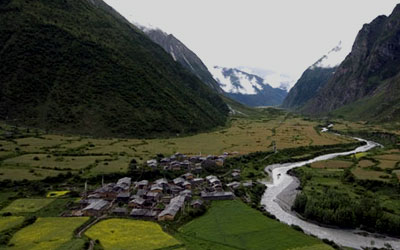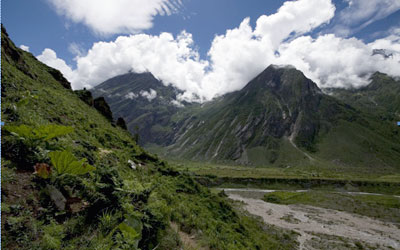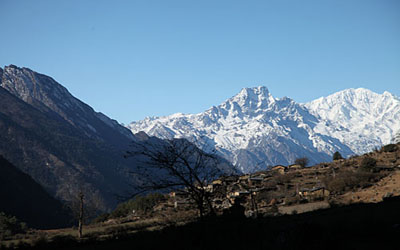Tsum Valley Trekking
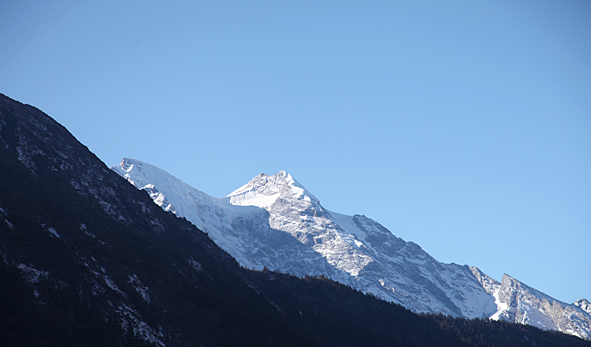 Tsum Valley was a restricted area until it was opened for trekking in 2008 and there is a little information available on the area.
Tsum Valley was a restricted area until it was opened for trekking in 2008 and there is a little information available on the area.
The Tsum Valley is a sacred Himalayan pilgrimage valley situated in northern Gorkha, Nepal. Literally “Tsum” means vivid. Against the majestic backdrop of the Ganesh Himal and Sringi Himal, and Boudha ranges, this serene Himalayan valley is rich in ancient art, culture and religion. The local people are mostly of Tibetan origin and speak unique dialect. Trails are strewn with artistic chortens and lined with mani walls made of thousands of stone slabs carved with drawings of deities and inscribed with prayers. The famous Kyimu Lung, a pilgrimage circuit in the central Trans-Himalaya, is well known for its center of learning and meditation. This circuit traverses the Tsum Valley the Manaslu area in Nepal, and southern parts of Tibet.
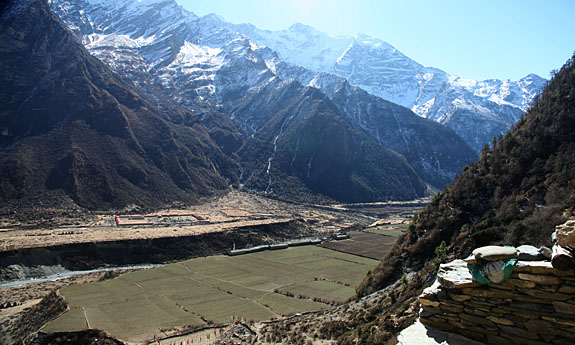
The Tsum Valley has long history of Buddhism. The Buddhist saint Milarewa is believed to be meditated in the caves of these mountains. Traditionally, the valley was a culturally distinct geographical called “Tsum Tso Chuksum”, which means thirteen provinces ruled as a single territory. The ancient remains of the Tsum Kingdom are still visible today. Due to its remoteness and inaccessibility, this sacred valley and its people have been bypassed by mainstream development for centuries. As a result, the unique culture of this valley has remained intact.
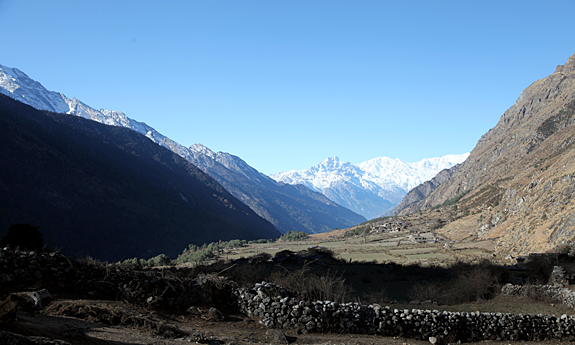
The valley is drained by the Shear Khola, which originates from the western glacier of Ganesh Himal and east and southern glaciers of Sringi Himal and meets the Budhi Gandaki at Nyak.
The valley is uniquely rich in wildlife, especially the Himalayan Thar and Blue Sheep which congregates in herds of 50 to 200. Hunting, fishing is not permitted in the Tsum Valley. The valley also boasts some unique and historic monasteries, including Rachen Gumba and Mu Gumba, which lie on a pretty plateau nestled in the lap of the valley, and Gumba Lungdang, situated at the base of a conical hill against the main slope of Ganesh Himal.
Expectations of the trek
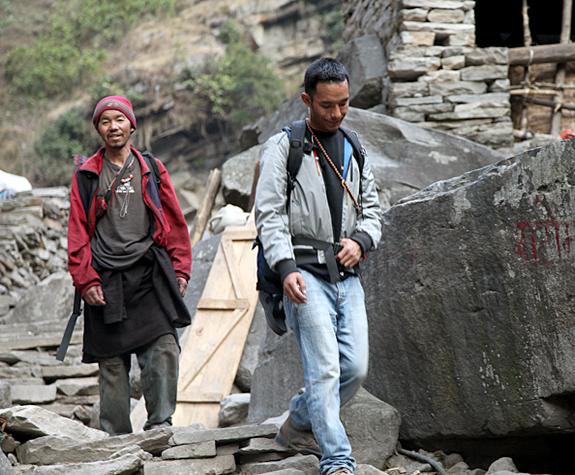
Expectations of the trek Visiting Tsum Valley is like walking back in time. Other than a handful of small changes, the sights and ambience of this sacred valley remain timeless. Patches of purple-hued amaranth interspersed with fields of brown barley, dzos and yaks grazing in grassy meadows, rustic stone houses hugging the trail, long stretches of hand-carved mani stones and stacked mani walls, ancient villages dotting the landscape, rock chortens perched high on ridges, waterfalls cascading off soaring cliffs, rivers tumbling wildly down precipitous gorges, snow-capped Himalayan peaks scratching the deep blue sky, high remote mountain passes threading into Tibet, maroon-robed. Buddhist monks and nuns fingering prayer beads, and hard-working kind-hearted villagers warmly welcome you into this scenic and soaring valley where Tibetan culture is still celebrated today.
- Sites, side trips, volunteer work
- Milarepa Piren Phu cave
- Mu Gompa monastery
- Rachen nunnery
- Gumba Lungdang nunnery
- Dheron Gumba nunnery
- Health camps
- Trash clean-up
- School visits
- Ganesh amphitheater
- Cascading waterfalls
- Medicinal plants and herbs -over 50 varieties
- Wildlife, including musk deer, Himalayan tahr, blue sheep, ghoral and the elusive snow leopard.
- Handicrafts, including bamboo baskets, wooden masks and teacups, wood jugs and kitchen implements, musical instrument (dhagen), yak wool blankets, kimonos and mattresses.
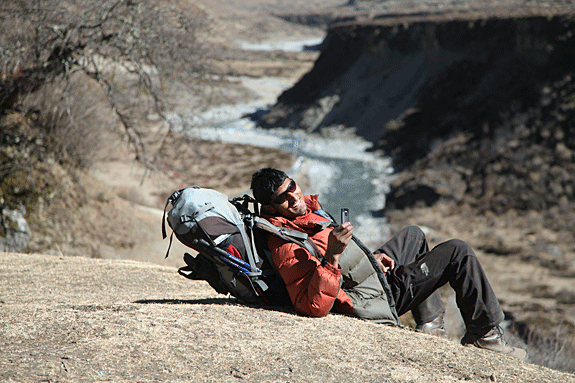
- Participation in local activities:
Festivals, including Losar (Tibetan New Year in Jan/Feb), Dhachyang (Horse festival in Jan/Feb), Saka Dawa (Buddha’s birth, enlightenment and death in May), Faning (food celebration in Aug), Mask dance in June/July.
-
Explore Mountain:
Tsum Valley is located against the majestic backdrop of the Ganesh Himal, Sringi Himal and Baudha Himal ranges providing ample of photo-opportunities of snow-clad peaks.
- Explore Way of life:
Tsumbas believe in the reincarnation thus the birth and the death are just cyclic nature, not supreme. In all aspects, the holy men lamas and astrologers play a major role.
- Birth:
The birth of the child in the home keeps the family people to reunite together. Going out and working in the land is supposed to bring bad luck and agitate the spirits, Lhu. Few days later lama visits the home where birth took place. He offers prayers to the god and household deities. He gives name to the newly born child and tells the child’s future seeing the astrological chart. Generally old people in the home take care of this newly born child letting his/her parents to work. They lack day care centre and homeopathy facility.
- Marriage:
Winter is the suitable season for marriage. There is plenty of time to celebrate.
Traditionally marriages are seen between the young people of same class. However the trend is moving towards young people selecting their own partners within the same class or across class boundaries.
- Death:
The death body is kept untouched for several days in its deteriorating stage until the visit of Lama for the instructions to dispose the body. The astrological chart of the death person determines the type of burial referring to either of four components: cremation, ground burial, water burial or the sky.
Explore People & Religion
The local people are mostly of Tibetan origin and speak a unique dialect. Even these days, some families practice polyandry (or having more than one husband at a time). These families have been found to be well managed and wealthier than other families.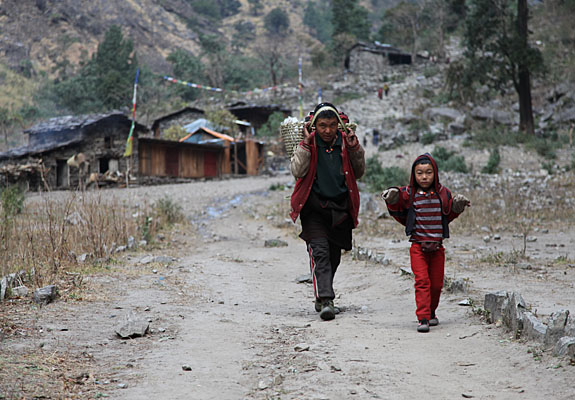
A long history of Buddhism can be seen. The Buddhist saint named Milarepa is believed to have meditated in a cave in these mountains. It is believed that there is a favourable ambience for fortunate events in this region.
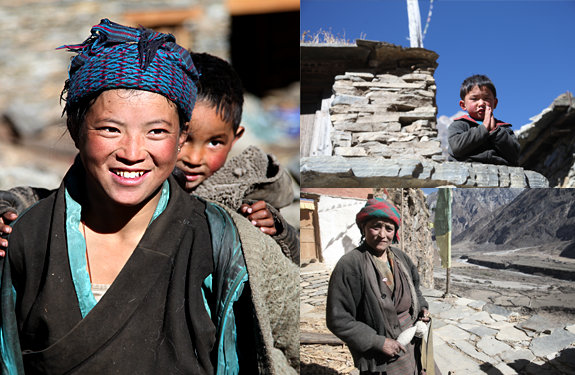
The people in Tsum have a strong faith in Buddhism. They pray to Buddha, Guru Rinpoche (Padmasambhava) and some bodhisattvas. They install prayer flags, kata, or Mani walls, burn butter lamps in monasteries, and believe in the reincarnation of lamas.The histories and way of life of supernatural entities and stories about them are well-known. Nevertheless prayer flags, kata, or Mani walls are installed and ritual burning of juniper is performed to purify an area against such supernatural entities. The people of Tsum perform numerous rituals and festivals against devil entities. However, the slaughtering of animals on an altar to honour deities does not occur. A few laymen and lamas practice some special rites to exorcise evil factors. Local people practice mainly two types of astrology "Black" and "White" for the determination of auspicious days.
Itinerary I - 17Days
$2040 Per Person

Tsum valley located against the majestic backdrop of the Ganesh Himal, Sringi Himal and Baudha Himal ranges providing ample of photo opportunities of snow-clad peaks.
Itinerary II - 18Days
$2160 Per Person

People in Tsum have a strong faith in Buddhism. They pray to Buddha, Guru Rinpoche (Padmasambhava) and some bodhisattvas.
Itinerary III - 26Days
$3120 Per Person
![]()
The local people are mostly of Tibetan origin and speak a unique dialect.Buddhist saint named Milarepa is believed to have meditated in a cave in these mountains. It is believed that there is a favourable ambience for fortunate events in this region.It is believed that there is a favourable ambience for fortunate events in this region.
Itinerary IV - 24Days
$2880 Per Person
![]()
The valley is uniquely rich in wildlife, especially the Himalayan Thar and Blue Sheep which congregates in herds of 50 to 200. Hunting, fishing is not permitted in the Tsum Valley. The valley also boasts some unique and historic monasteries, including Rachen Gumba and Mu Gumba, which lie on a pretty plateau nestled in the lap of the valley.
Exploration Info
- Country Nepal
- AreaManaslu Region
- Activities Trekking
- Trip Grade Medium/ Hard
- Start/End Kathmandu
- Accommodation Camping/Home stay
- Trip Duration 17/18/24/26days
- Max Altitude 5,134 M.
- Best Season March to May &
September to November - Walking per day 4 to 7 per day
- Min Grp Size 2 Pax
- Seasons:March, May , Sept - Nov
(All season also possible as well)
Itinerary I - 17Days
$2040 Per Person

Tsum valley located against the majestic backdrop of the Ganesh Himal, Sringi Himal and Baudha Himal ranges providing ample of photo opportunities of snow-clad peaks.
Itinerary II - 18days
$2160 Per Person

People in Tsum have a strong faith in Buddhism. They pray to Buddha, Guru Rinpoche (Padmasambhava) and some bodhisattvas.
Itinerary III - 26Days
$3120 Per Person
![]()
The local people are mostly of Tibetan origin and speak a unique dialect.Buddhist saint named Milarepa is believed to have meditated in a cave in these mountains. It is believed that there is a favourable ambience for fortunate events in this region.It is believed that there is a favourable ambience for fortunate events in this region.
Itinerary IV- 24Days
$2880 Per Person
![]()
The valley is uniquely rich in wildlife, especially the Himalayan Thar and Blue Sheep which congregates in herds of 50 to 200. Hunting, fishing is not permitted in the Tsum Valley. The valley also boasts some unique and historic monasteries, including Rachen Gumba and Mu Gumba, which lie on a pretty plateau nestled in the lap of the valley.

